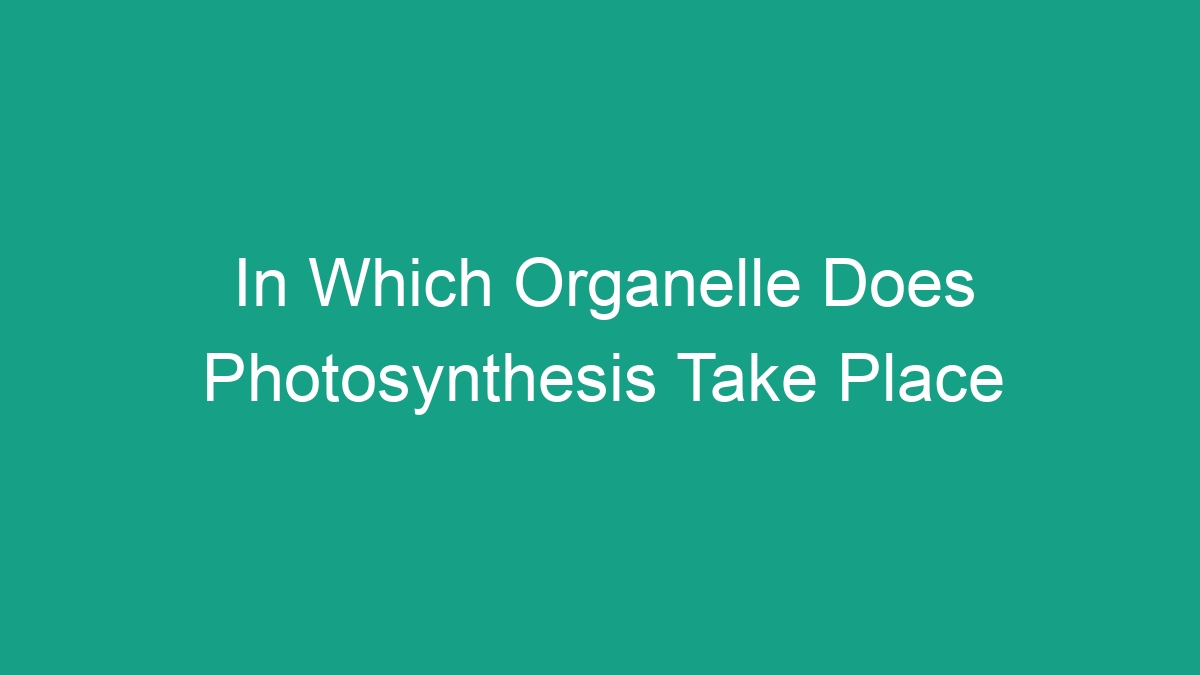
Introduction to Photosynthesis
Photosynthesis is a vital process for all living organisms on Earth, as it is the primary way in which energy from the sun is converted into chemical energy. This process is responsible for producing oxygen and glucose, which are essential for sustaining life. In plants, algae, and some bacteria, photosynthesis occurs in chloroplasts, the specific organelles where this process takes place. In this article, we will explore the role of chloroplasts and delve deeper into the process of photosynthesis.
What is Chloroplast?
Chloroplasts are specialized organelles found in plant cells and other eukaryotic organisms that carry out photosynthesis. These organelles have a distinct green color due to the presence of chlorophyll, the pigment that captures light energy for photosynthesis. Chloroplasts have a double membrane structure, with an inner and outer membrane, and contain their own DNA and ribosomes. The inner membrane encloses a fluid-filled space called the stroma, where the enzymes necessary for photosynthesis are located, as well as a system of interconnected membrane sacs called thylakoids.
The Role of Chloroplast in Photosynthesis
The process of photosynthesis can be divided into two main stages: the light-dependent reactions and the light-independent reactions, also known as the Calvin cycle. These stages occur in different parts of the chloroplast and involve complex biochemical pathways that ultimately result in the production of glucose and the release of oxygen.
Light-Dependent Reactions
The light-dependent reactions of photosynthesis take place in the thylakoid membranes of the chloroplast. These reactions require the presence of light and involve the absorption of photons by chlorophyll, resulting in the conversion of light energy into chemical energy in the form of ATP and NADPH. This process also leads to the splitting of water molecules, releasing oxygen as a byproduct. The ATP and NADPH generated in the light-dependent reactions are used to power the light-independent reactions that take place in the stroma of the chloroplast.
Calvin Cycle
The Calvin cycle, or light-independent reactions, occurs in the stroma of the chloroplast. This series of biochemical reactions utilizes the ATP and NADPH produced in the light-dependent reactions to convert carbon dioxide from the atmosphere into glucose. The Calvin cycle also involves the regeneration of the molecule that captures carbon dioxide, allowing the process to continue. In this way, the chloroplast serves as the site for the synthesis of organic molecules through photosynthesis, providing essential nutrients for the plant and other organisms that consume it.
The Importance of Chloroplast in Photosynthesis
The presence of chloroplasts in plant cells is critical for the process of photosynthesis and the production of oxygen and glucose. Without chloroplasts, plants would not be able to convert light energy into chemical energy, and the entire food chain would be disrupted. Additionally, the release of oxygen during photosynthesis is essential for the respiration of living organisms, as it serves as the primary source of atmospheric oxygen. Therefore, the role of chloroplasts in photosynthesis is fundamental for the sustainability of life on Earth.
FAQs
What would happen if photosynthesis did not occur in chloroplasts?
If photosynthesis did not take place in chloroplasts, plants and other photosynthetic organisms would be unable to produce glucose and oxygen, leading to a collapse of the entire ecosystem. Without glucose, these organisms would not be able to obtain the energy necessary for survival, while the absence of oxygen would have detrimental effects on the respiration of living organisms, including humans.
Can photosynthesis occur in other organelles?
Photosynthesis is unique to chloroplasts in plant cells and some algal cells. While other organelles, such as the mitochondria, are involved in cellular respiration, which produces energy for the cell, only chloroplasts have the specialized structures and pigments necessary for carrying out the complex process of photosynthesis.
Are there any organisms that do not have chloroplasts but can still perform photosynthesis?
Some non-plant organisms, such as certain species of bacteria, have the ability to perform photosynthesis without the presence of chloroplasts. These bacteria contain specialized structures called chromatophores or thylakoid membranes that enable them to carry out photosynthetic reactions, albeit in a different manner than in chloroplasts.



